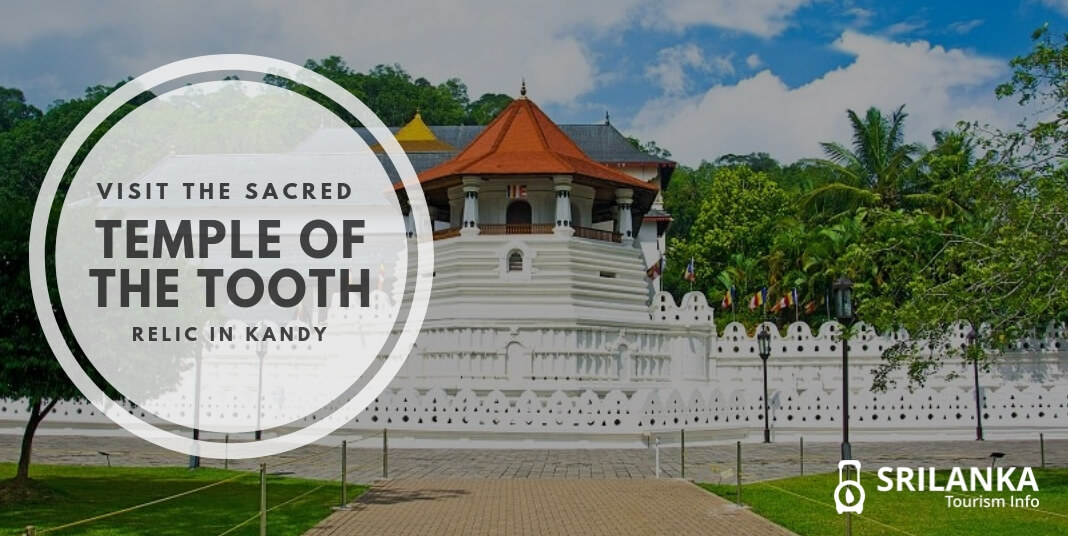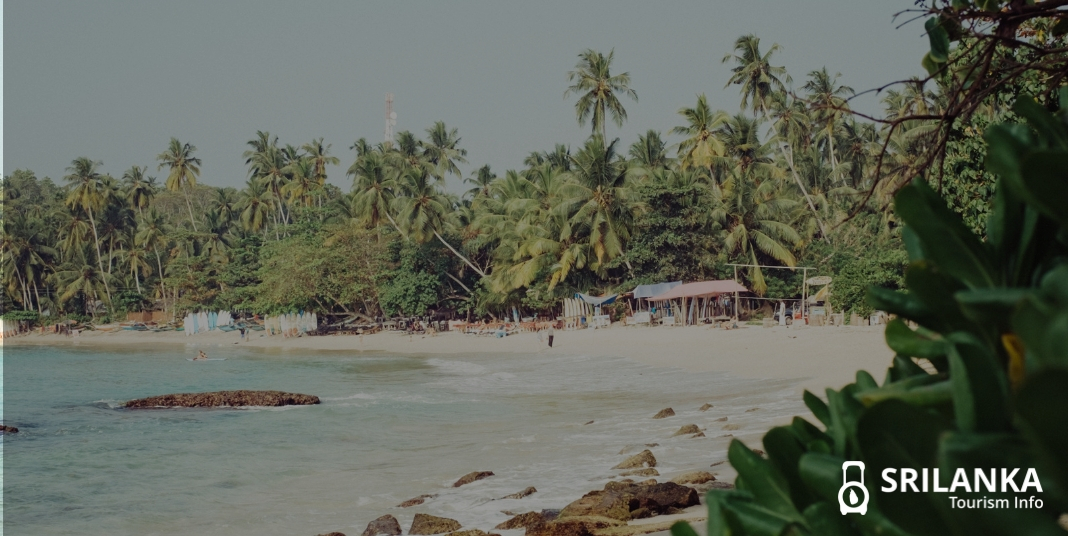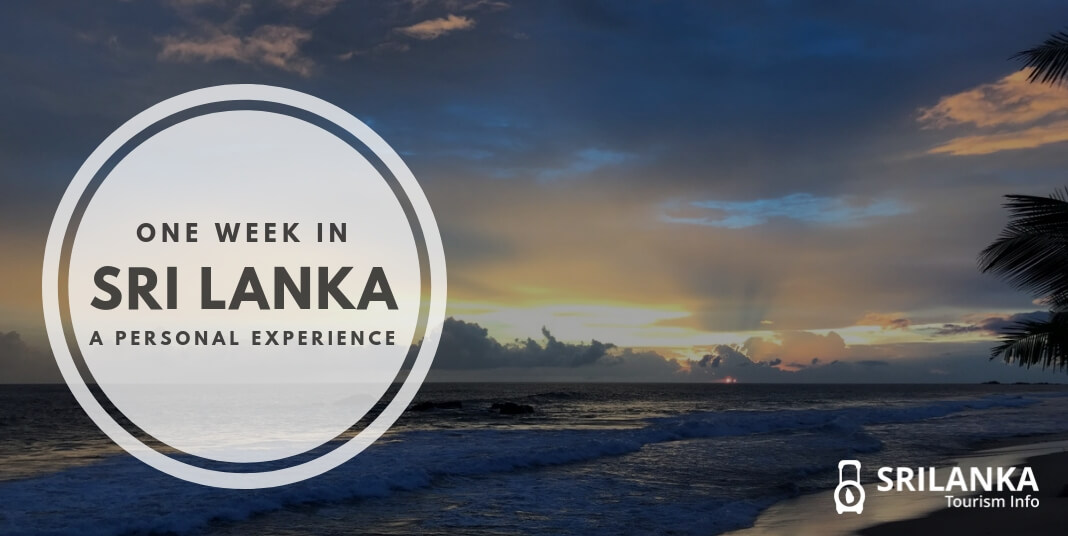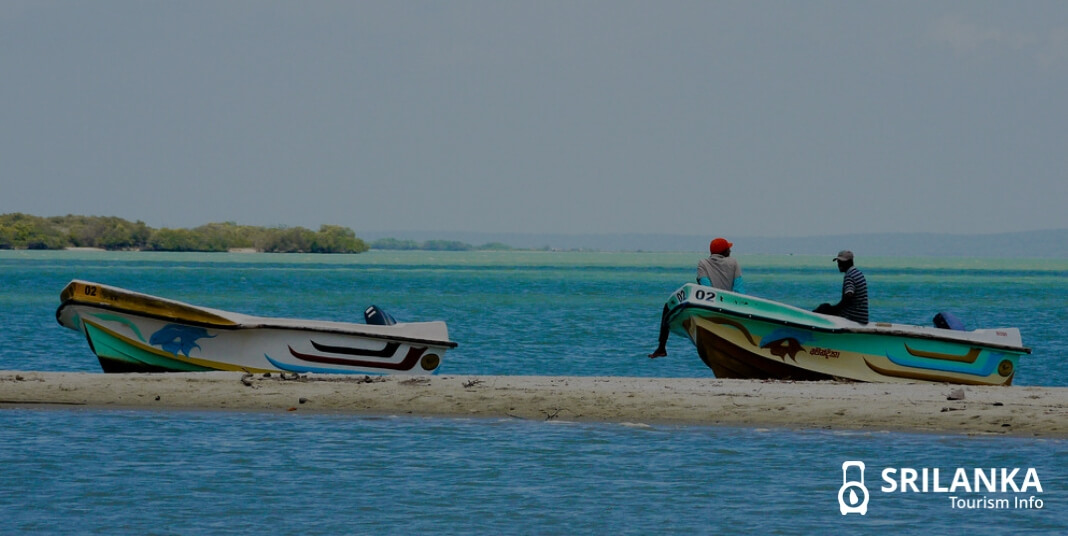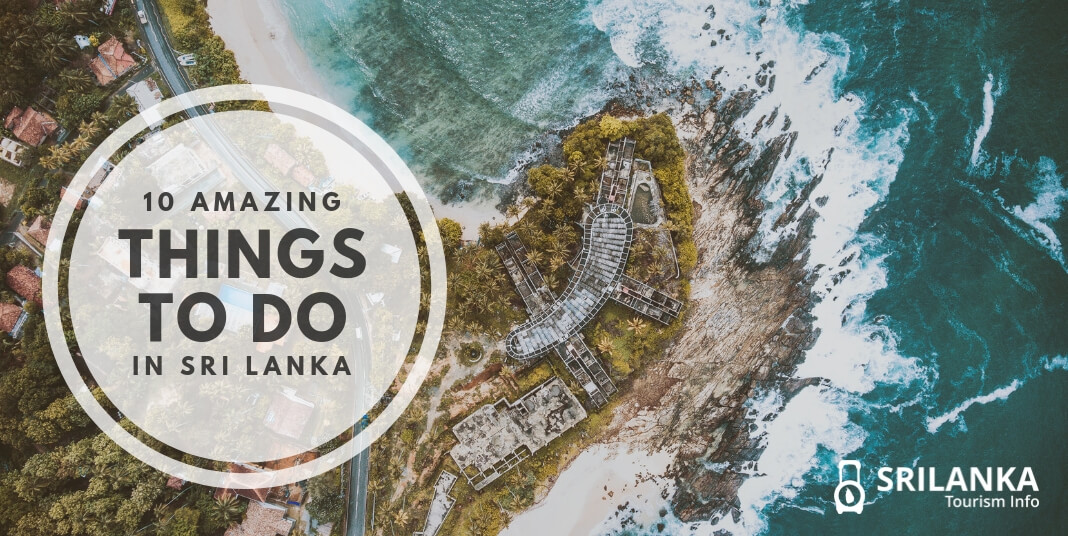As much as Sri Lanka is diverse in its wildlife, nature, and beaches, it is also a culturally rich country. Timeless tales and fascinating fables surround the Pearl of the Indian Ocean. The multicultural legacy has come down through generations and thus the country has a lot to offer to those who are keen to learn about history, culture, and religion.
The beauty of Sri Lanka is that it hosts many colourful UNESCO World Heritage sites. Since Buddhism encompasses a huge part of the culture and history of Sri Lanka, there are numerous Buddhist temples which you will find throughout the country.
Every temple in Sri Lanka is an epitome of serenity and spirituality. Artistic details, beautiful carvings, and ancient architecture are something every enchanting temple has to offer.
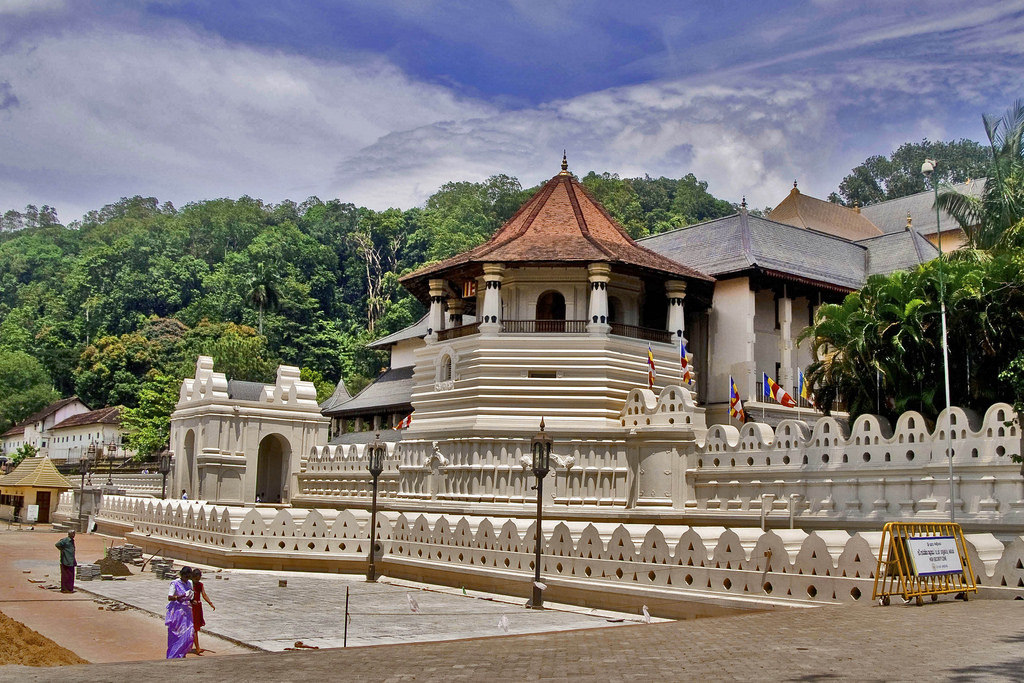
One noteworthy temple in Sri Lanka is the Temple of the Tooth in Kandy. The temple is home to the sacred tooth relic of Lord Buddha.
The Story of the Sacred Tooth
Constructed in the 16th century AD, the Temple of the Tooth —also known as the Sri Dalada Maligawa. The temple is situated adjacent to the Royal Palace complex of the former kingdom of Kandy. The shrine overlooks the vast expanse of Kandy Lake.
The temple proudly boasts as the humble abode of Buddha’s tooth. As the story goes, the sacred tooth is said to have been taken from his funeral pyre in Kushinagar in India, and later smuggled into Sri Lanka.
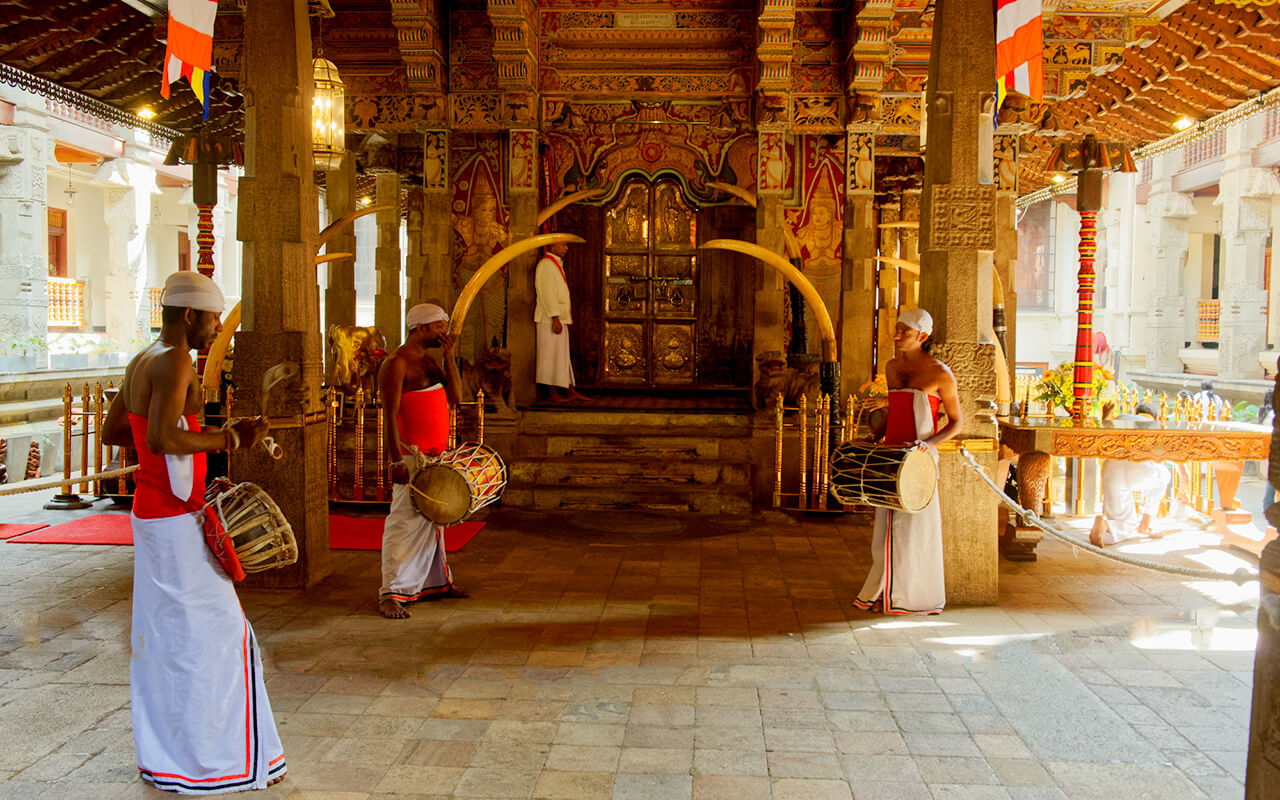
In ancient times, the tooth was given to the Sri Lankan Monarchy. During this period, the tooth was passed around to various kings and holy men. Before it finally made it to the temple, the tooth is said to have been relocated several times across the centuries, where it eventually landed up in Kandy. To safeguard Buddha’s tooth, the temple was built in the royal palace complex. Today, both Kandy, as well as the temple, is listed as UNESCO World Heritage Sites.
Don’t know What to Eat in Sri Lanka? Read this Blog
Architecture
The entire temple complex is built using classical Kandyan architecture. The main shrine has two floors. There are different chambers on every floor including the one where the tooth relic is kept known as ‘handun kunama’ (inner sanctum).
The tooth is housed in a dedicated temple held in a golden stupa inside the two-story shrine fronted by two large elephant tusks. The relic rests on a solid gold lotus flower, encased in jeweled caskets that sit on the throne.
Although parts of the shrine were destroyed and rebuilt in various bombings and acts of war, the building is still a perfect depiction of opulence, grandeur, and magnificence. The interior, as well as the exterior, depicts the rich Buddhist heritage as it boasts of golden architecture and moonstones. It is adorned with beautiful Buddhist statues, figurines, lanterns, flowers and coloured walls.The entire architecture in the temple is based on Buddhist Mandala, signifying the universe of Buddhism.
In addition to the main shrine, there are other attractions as well such as the Royal Palace that now serves as an archaeological museum for tourists.
Though tourists are actually allowed to visit the temple, they don’t actually get to see the tooth. That’s mainly because the sacred tooth relic is kept in the smallest of the seven nested golden caskets, which is further kept in the inner shrine of the temple.
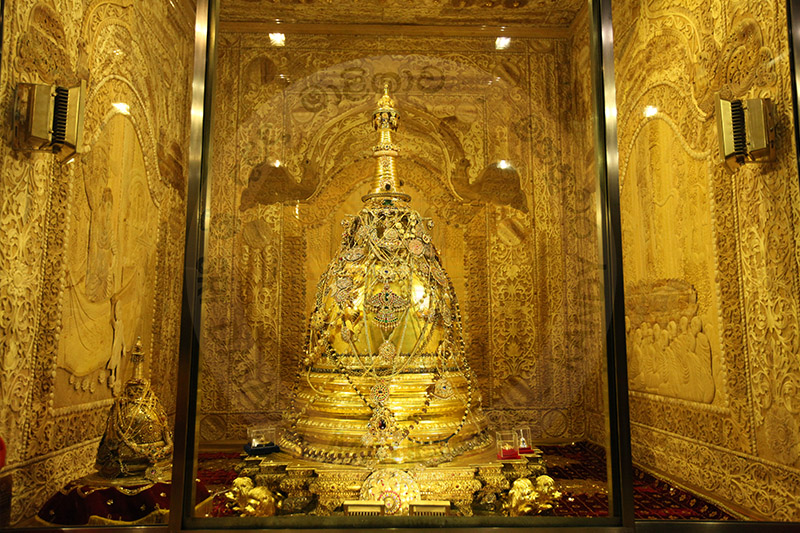
However, tourists and visitors should not refrain from visiting the temple. The main temple is definitely a place worth admiring for its beauty and cultural heritage. The temple complex includes a series of smaller temples, shrines, and museums.
Main Attraction of the Temple
The sacred tooth relic is placed on a stupa weighing 3,500 kg and is made from 320 kg of pure gold of which most have been donated by devotees. It is placed in a hall called ‘Sacred Hall of Light’ on the fourth floor. Though visitors are not allowed to enter the inner chamber, they can view the stupa from the public viewing area.
Entrance Fee & Facilities
Not all temples in Sri Lanka levy an entrance fee. However, temples that are popular tourist spots do charge an entrance fee. Locals can visit free of cost while tourists are charged $10.
If you’ve done your research beforehand, you can opt for a self-guided tour and take yourself through the entrance, lower hall, upper hall, palace, and museum.
If you’re keen to learn more about the history and cultural background, you can hire a freelance guide for two hours. You’ll find many of them at the entrance of the temple. Free audio guides are also available at the ticket office. Getting a guided tour around the entire temple complex costs $3.5 for a group.
- For travelers with disabilities, elevator facilities are available.
- For tourists interested in learning more on Buddhist teachings, there is an interactive workshop called ‘Discovering Buddhism’.
- On the second floor of the temple complex, there is a small tea house that serves beverages and vegetarian cuisine. There is a culture shop on the same floor too.
During festivals and events, the temple does get crowded with worshipers, tourists, devotees, Chinese tour groups and Thai monks. Therefore, when visiting the Temple of the Tooth, go around the afternoon.
Also Read: 10 Amazing things to do in Sri Lanka
Timings
- The official temple timings to visit the Buddha Tooth Relic, Buddha Culture Museum and the Relic Chamber are from 9 am to 6 pm.
- The Eminent Sangha Museum can be visited from 7.00 am to 7.00 pm, seven days a week.
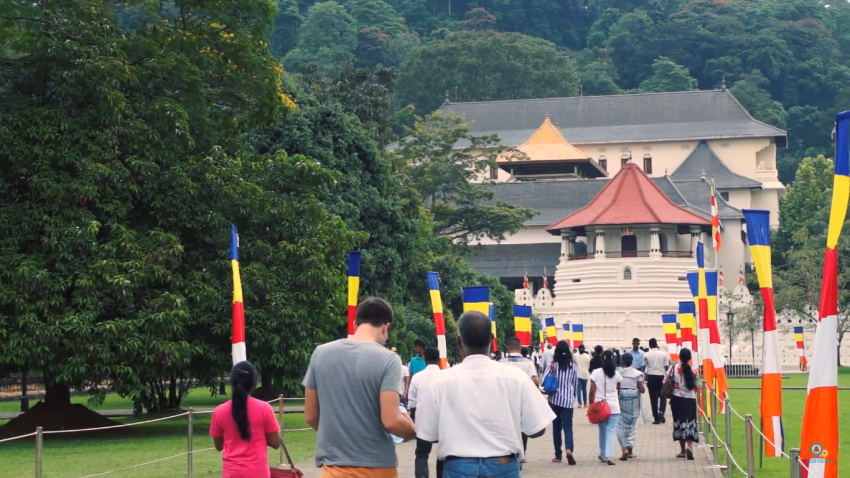
In the inner chamber of the temple, monks perform rituals three times a day – during dawn, noon and in the evening. Once a week, on Wednesdays, the casket where the tooth is kept receives symbolic bathing in healing water.
Also Read: Breakfast with Elephants in Sri Lanka for Less Than $50
Code of Conduct & Ethics
Most of the historical places and temples in Sri Lanka are popular tourist attractions. Thus, if you do plan to visit any of the temples, you need to treat them with great respect.
Whether you’re visiting a religious site or place of worship, it is mandatory to abide by the following code of conduct. Failure to do so can put you in trouble. Every historical site has a cop monitoring badly behaved visitors and tourists.
- Dress code: What you wear is the most important criteria. Since Sri Lanka is a tropical and humid country, quite often tourists are spotted wearing hats and skimpy clothing. However, if you plan to visit a temple, refrain from doing so. Buddhist temples are very particular about the dress code. Most locals visiting these temples are clad in white as it denotes a symbol of purity. However, it’s alright if tourists don’t abide by the color code. Skimpy clothing, shorts, mini-skirts, see-through clothing, and sleeveless dresses are not allowed inside the temple. For women, make sure your shoulders and cleavage are covered. For both men and women, it is mandatory that the legs have to be covered. Take off your hat and shoes before entering the temple. It’s best not to wear black or any other dark-colored clothing.
- Taking photographs: In most Buddhist religious places, tourists are allowed to take photographs. It is also free of charge. However, tourists should never take pictures with their back facing the Buddha statue. While taking pictures, make sure the flashlight is turned off. Commercial filming and photography need permission from the state authorities.
- Maintain silence: In every Buddhist temple, it is essential to maintain silence. Devotees and monks are usually engaged in meditation and chanting of religious verses. Therefore, stay calm and enjoy the serenity and blissful experience.
- Don’t touch paintings and statues: Buddhist paintings are beautiful and thus they may urge one to touch them. However, refrain from doing so. Touching them can lead to discoloration. Also, since most of the paintings are ancient and fragile, they tend to crumble with touch.
- No smoking and drinking: You are not allowed to smoke in Buddhist temples. Whether you see a smoking sign or not, it is prohibited. Smoking can lead to an expensive fine or jail term. Also, never consume alcohol and enter a temple, or carry bottles of wine or liquor.
- Don’t shake hands with monks: Devotees are required to treat the monks with respect and maintain a graceful distance. Don’t greet them by shaking hands or saying ‘hello’. In case, you do plan to greet them, fold your hands together in front of your chest and say ‘sadu’ while keeping your body on your knees.
- Buddha tattoos are not accepted: Having a Buddha tattoo is considered as a mistreatment of the Buddha image. Most locals consider it as an act of offending Buddhist sensibilities. If you do have a Buddha tattoo on your arm or back, make sure it is covered with an appropriate piece of clothing.
- Don’t smell flowers: As an offering to the deity, tourists often bring flowers with them. It may be tempting to smell them, but as a rule, you are not allowed to smell the offerings. If a devotee or monk sees you doing so, they will not accept your offerings.
If you want to enjoy the calm and serenity of a Buddhist temple, follow the above code of conduct and ethics.
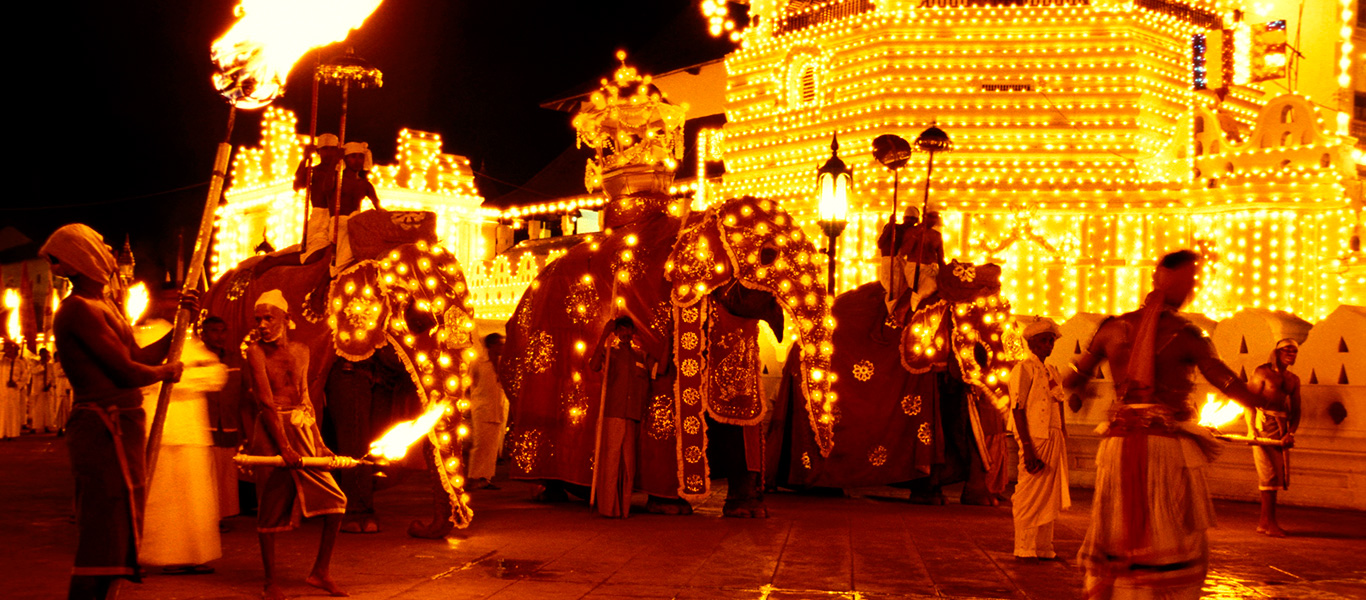
The Temple of the Sacred Tooth Relic is a prime monument that the Sinhalese Buddhists have utmost faith in. A visit to the temple is an absolute must when you are in Kandy. Though the tooth stays hidden in the golden casket, you get to witness the sheer beauty and magnificence of the well-protected inner shrine where it is kept.
Annually, during the Esala Perahera procession in the month of July, the relic casket is paraded through the streets atop a male elephant. The 10-day long festival is one of the largest Buddhist festivals in the world and most important in Sri Lanka.
If you are planning a trip to Kandy, the best time would be during the festivities or when the ceremonial offerings and prayers are given.
Found this blog useful? Like, comment and share!
Image Source: Google

